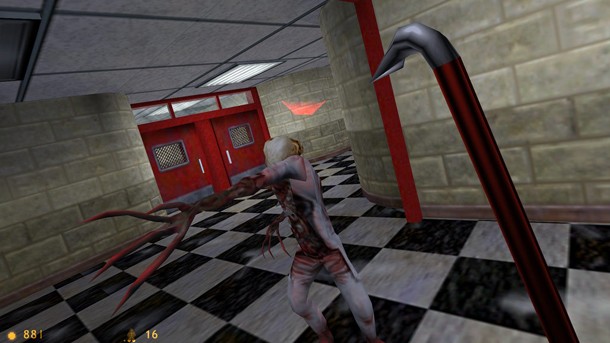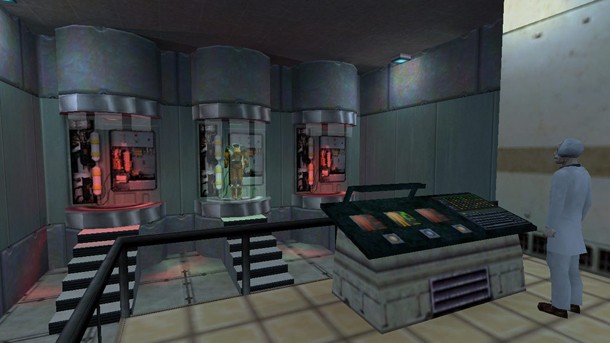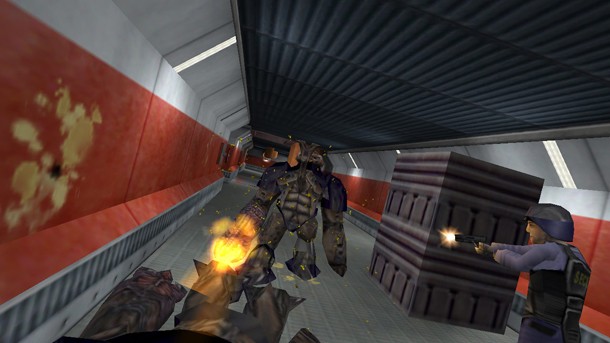The Essentials – Half-Life

The Essentials is Game Informer's weekly recurring feature that takes a look at the most important games the industry has to offer. These games aren't just a ton of fun: Their quality, innovation, and industry influence make them must-play experiences for anyone who wants a greater appreciation of our interactive medium.
This weekend we're taking a look at Half-Life. It’s the game that established Valve as a force to be reckoned with regarding game design, interactive narrative, and technological know-how. It’s the first time we met the bespectacled hero Gordon Freeman, fought a head crab, and saw the G-Man out of the corner of our eyes.
Release Year: 1998
Publisher: Sierra Entertainment
Developer: Valve
Released For: PC, PlayStation 2
Released two years after Quake and five years after Doom, Half-Life picked up and dramatically rearranged the pieces and mechanics popularized by those two games in radical ways that changed the first-person shooter genre and interactive storytelling in many significant ways.
The original Half-Life was Valve’s first release after a group of Microsoft employees (primarily co-founders Gabe Newell and Mike Harrington) left the company to make video games. It is clear from Half-Life’s opening moments that its creators were fans of the first-person shooter genre, but wanted to push it forward in unexpected ways.
As the opening credits roll, protagonist (and in turn the player) Gordon Freeman is riding a tram through an advanced scientific laboratory. There is no gun in your hand, no enemies to battle – just the opportunity to look over the facilities and take in the environment that would soon be your playground. At that point in time, the shooter genre had been a purely action-focused experience, where you shoot first and maybe ask questions later if you happen to have some free time. To quietly and subtly absorb the atmosphere and listen closely to announcements over the facility loudspeaker for story cues and information about Half-Life’s world was thrilling, and more importantly, entirely effective.

It didn’t take long to realize that you never leave Gordon’s perspective. Whether you’re simply doing your job, eavesdropping on conversations, or fighting aliens, the whole game is one uncompromised, uncut journey through the Black Mesa facility through Gordon’s eyes. It was incredibly novel at the time and still feels fresh today more than 15 years later.
Half-Life was built using Quake’s engine, but Valve heavily modified it in order to implement a number of innovations. The biggest of these modifications was in the way enemies and non-player characters moved through the environment. Enemies would flank you, try to corner you with grenades, take cover, and even engage other more imposing enemies if you weren’t the immediate threat. Half-Life is one of the first shooters where you could watch enemies fight each other in tactical ways, and while it was an exciting spectacle, its main purpose was to deliver story and build the world – there was a larger war happening in Black Mesa than the one in which Gordon was immediately engaged. It made you feel like a participant in a living world as opposed to simply playing through a series of challenges designed for your enjoyment.
The smart A.I. also extended to friendly characters. Scientists would follow you to escape danger, and security guards would try to help you to the best of their abilities. Again, it all fed into the concept of a living world.

Half-Life was also one of the first games to heavily incorporate in-game scripted moments. Set-piece moments are the cornerstone of shooters like Call of Duty, but Half-Life was among the first to orchestrate large (and often explosive) moments in the game in front of the player to help deliver important story moments.
Valve went on to release Half-Life 2, Team Fortress, and Portal among other titles, and stands as the biggest technological innovator in the PC gaming space thanks to its Steam game delivery service. All of that wouldn’t have happened, however, without the impressive kickstart Half-Life provided the developer. It’s a classic by all definitions of the word and important benchmark for first-person experiences that still holds up today.
For more on Half-Life, check out our Super Replay of the game, where we played through it in its entirety. For more of the Essentials, click the banner below.

Get the Game Informer Print Edition!
Explore your favorite games in premium print format, delivered to your door.
- 10 issues per year
- Only $4.80 per issue
- Full digital magazine archive access
- Since 1991










